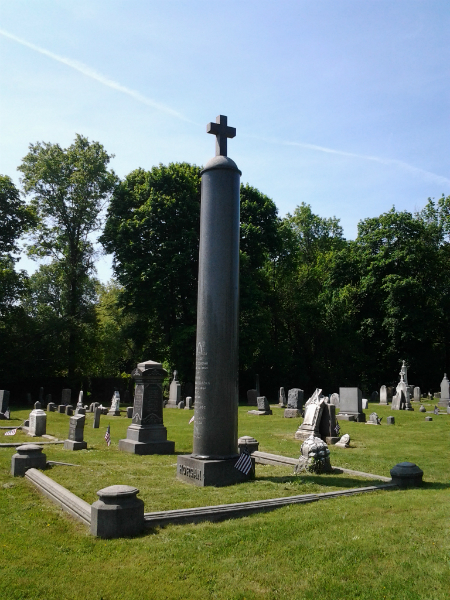

Dillon became the Mount's first lay president. In 1967 the council dissolved itself and the college was re-incorporated under a Board of Trustees. Previously, the president of the college had served as seminary rector. In 1930, a separate administration, headed by a rector, was established for the seminary, under the president and the council. The College Council, composed of diocesan priests, was self-perpetuating and elected from its own members the president and other officers of the college. With this charter, the institution's official name became Mount Saint Mary's College, whereas previously it had been called Mount Saint Mary's Seminary.

Together with Brut é, they formed the nucleus of the College Council, which became the institution's official owner and governing body when it was chartered in 1830 by the state of Maryland. Upon his appointment that year as bishop of New York, Dubois sought unsuccessfully to give Mount Saint Mary's to the Jesuits at Georgetown but eventually deeded it to two diocesan priests. Mary's and the Mount as major seminaries had led to a formal separation of the Mount -and of Dubois and Brut é personally -from the Sulpicians, who ceded control of the Mount back to Dubois. Thus, by 1820 the institution included something like the college and seminary as they now exist, though what was then the college later divided into a high school or "preparatory school," which closed in 1936, and a college in the modern sense.īy 1826, financial difficulties and competition between St.
#Mount st.marys cemetery mary a mclaughlin full
Eventually, in 1820, Dubois obtained permission to introduce a full program in theology for study toward priesthood. This required some students to remain at the Mount beyond the point at which they could have entered Saint Mary's. Also for reasons of economy, Dubois initiated a system in which older students taught younger ones (a system which persisted into the twentieth century). Though founded as a preparatory seminary, the college needed the income provided by young men who did not intend to study for priesthood, and was a "mixed" institution at least from 1811. One of Mother Seton's sons, William, is buried in the cemetery on the Mount campus. Brut é later served as her spiritual director. He served as her religious superior and was instrumental in her community's adoption of a modified version of the rule of the Daughters of Charity, with whom he had been familiar in France. Dubois lent her his cabin while she awaited the completion of her own settlement in St. In 1812 Dubois was joined by Father Simon Gabriel Brut é de Remur, who came to be known as the Mount's "second founding father." Except for 1815 –18, Brut é remained at the Mount, teaching theology and philosophy and exercising a strong hand in institutional governance, until 1834, when he was made bishop of Vincennes, Indiana. Mary's, and in 1811 control of the Mount was formally transferred to the Sulpicians. Later in 1808, he became associated with the Society of St. He built a church there in 1806, and in 1808 established a college as a preparatory seminary for Saint Mary's in Baltimore. Dubois, a refugee from revolutionary France, bought a tract of land on the side of a mountain already known as Saint Mary's Mountain. It is located near Emmitsburg, Maryland, about 70 miles north of Washington, D. Founded in 1808 by Father John Dubois, Mount Saint Mary's comprises the second-oldest Catholic college and the second-oldest Catholic seminary in the United States.


 0 kommentar(er)
0 kommentar(er)
